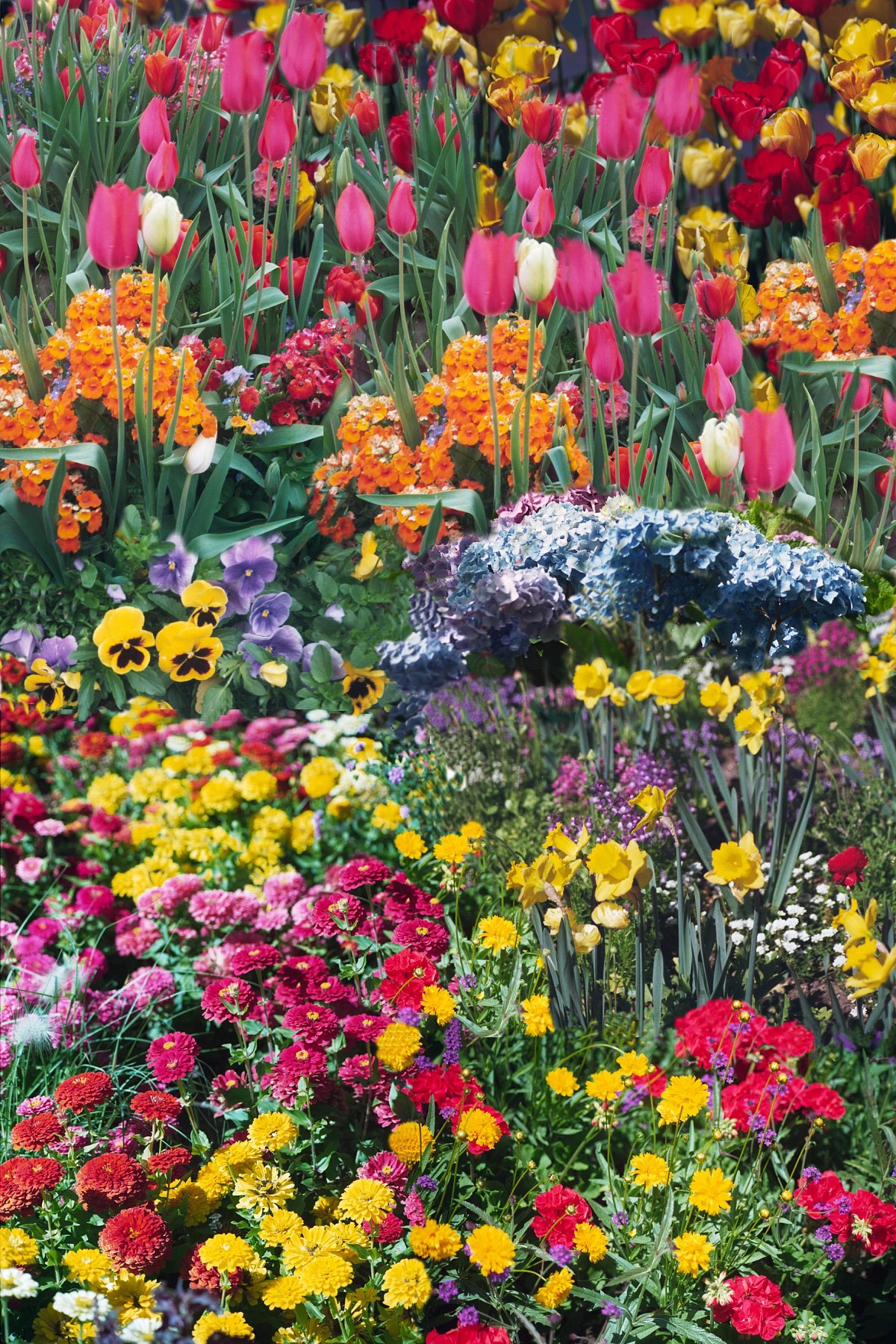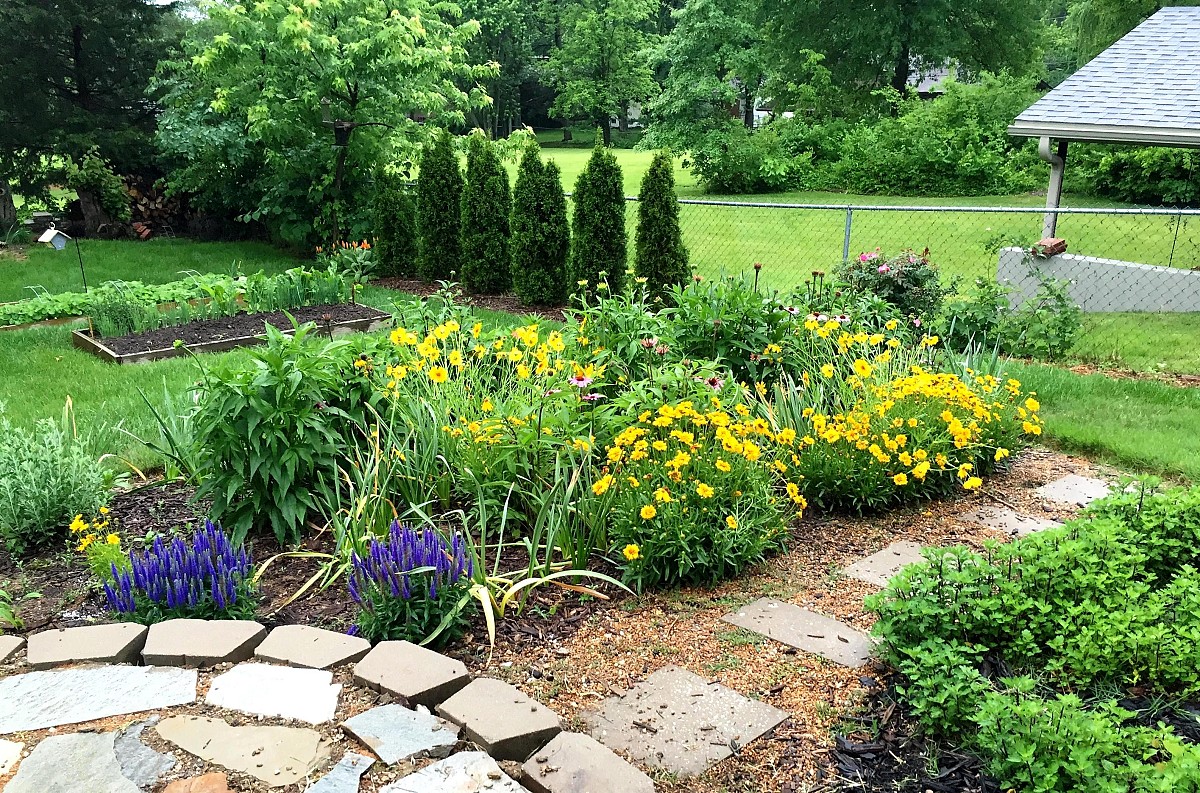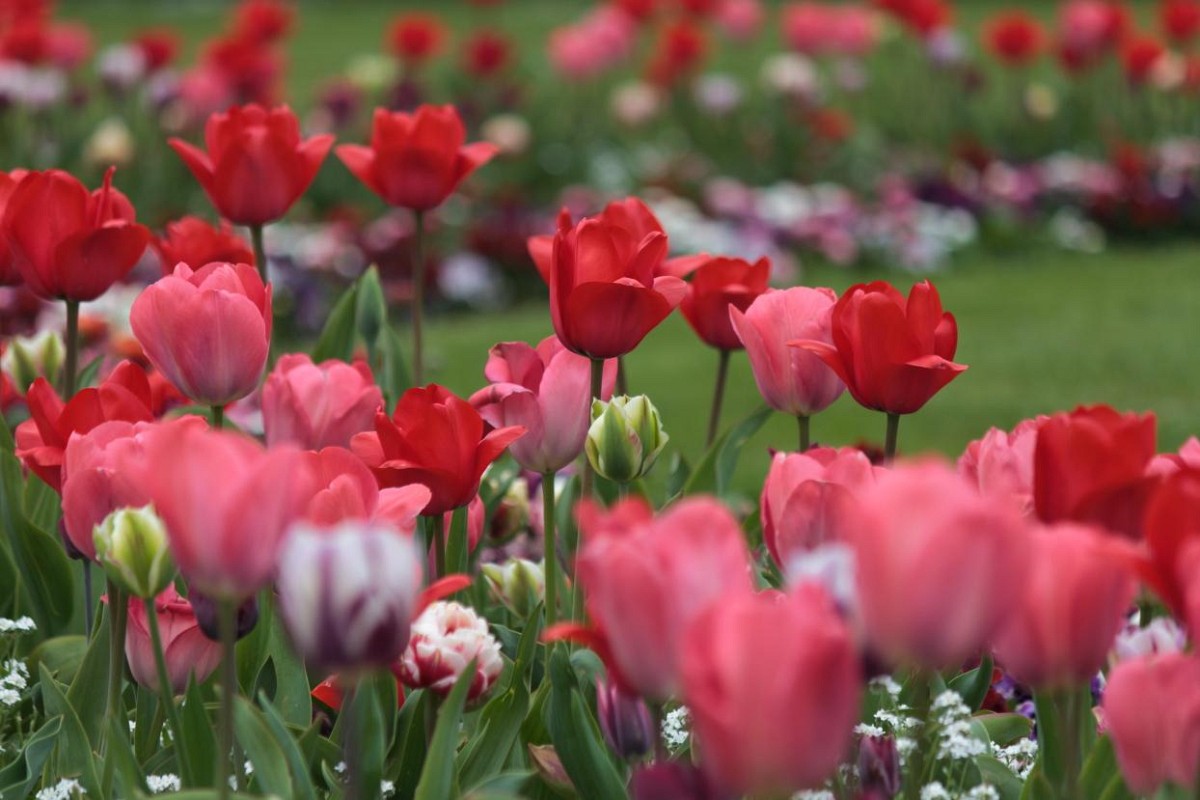Plan Your Flower Garden Layout
Who else thought this year that spring might never arrive? Good news: warm weather is just around the corner. It’s time to plan your flower garden layout!
Now, while most folks vastly prefer planning a garden to other seasonal home improvement tasks like, oh, cleaning gutters, it still takes time and effort – not to mention a smidgen of expert advice. For a little help, check out our guide to a simple, successful flower garden layout.
Garden Layout Influencers
Consider local conditions. Each garden is a microclimate of its own. Research the types of plants which are best suited to local conditions: your area’s weather, the amount of rainfall, the configuration of your yard, and your soil type.
Let the sun shine in. Make sure that no plants will be blocked by taller neighbors, so they all get their fair share of sun. In an overly shady yard, you may want to trim existing trees to lighten things up. Done right, pruning will also contribute to tree health.
Remember variety is the spice of life gardens. Vary your chosen plants’ height, shape, scale, and even their texture. You want to create the impression of a lovely natural meadow, not a regiment of soldiers standing stiffly at attention.
Keep your garden constantly colorful. Tired of looking at a monochromatic white, snow-covered landscape? Me too. Choose flowers that will rev up your yard with a glorious melange of hues. Mix plants which have varied blooming seasons for a gorgeous, color-filled garden from spring through fall.
Indulge your sense of smell. Sweet perfume from scented plantings, such as freesias, will add a delightful extra dimension to your flower garden. TWO FRINGE BENEFITS: You’ll attract pollinators like birds and bees, and you’ll be able to enjoy the fragrances long after dark.
Allow access. Don’t forget this obvious but often overlooked step. Ensure that you will have access to tend to all your plants. If the planted area is going to be large, include pathways or stepping stones in your garden layout.
Enhance with the right hardscape. How can you make your garden a spot where you’ll love to linger? Hire a landscaper to enhance your design by adding a rustic bench or two and perhaps installing a Zen water feature.
Garden Planning Tips
Beware invasives. Avoid types of plants that can take over your entire plot, particularly when you have only a small garden. However, if you absolutely must have a fast-spreading flower like purple loosestrife, limit its growth by planting in a container.
Try a garden planning app. Get some high-tech help to plan your garden layout, save your design when you’re satisfied, and even let you know what tools and supplies will be required to bring your vision to glorious life.
Organize logically. Consider, first of all, where tall plants such as shrubs will do best. Then fit smaller flower species in around them. Always work from the back of the garden forward. (Perennials should also be placed toward the rear, because they’ll need to be dug up and replaced less frequently than annuals.)
Visualize your garden ”IRL.” Buy seedlings from a nursery or start flower plants from seed indoors. To get a great idea of how your garden layout will work in real life (IRL), arrange the young plants, still in their pots. Readjust their positions until you’re sure you’ve got everything exactly the way you want.
Put off planting bulbs till next fall. Although you’re probably itching to start ASAP, be aware that bulbs like tulip or narcissus should be reserved for autumn planting; they need several weeks of low temps to thrive. GOOD NEWS: Getting those bulbs into the ground 2 weeks before the first expected frost will give you a headstart on next spring’s beautiful flower garden.
Laura Firszt writes for networx.com.
Looking for a Pro? Call us (866) 441-6648

Landscaping Average Costs
Landscapers Experiences

Hiring A Great Landscaper Was Almost Too Easy, Even Long Distance

New Low-Maintenance Landscaping To Update Our Yard

![Audrey from Central Pennsylvania, USA [CC BY 2.0]/wikimedia Audrey from Central Pennsylvania, USA [CC BY 2.0]/wikimedia](https://d2a8huubqzcsft.cloudfront.net/media/500x375/art_5c857a463017b.jpeg)





